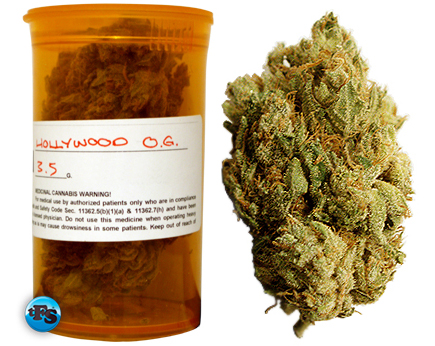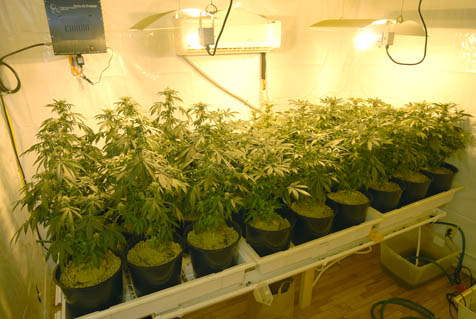Medical Marijuana
Marijuana is the most common drug in the
world. We all have come across lot of discussions and heated debates regarding
various aspects of it. However, the most interesting among them is regarding the
medical use of marijuana. It may come as a surprise to at least some people that
marijuana, in fact, has medicinal properties and that it is not just a street
drug.
However, the medical application of marijuana is clouded with
controversies from different angles of life – religious, social, and political.
Let us now analyze various points – both pro and anti – about this “wonder”
drug. The most important quality of
marijuana is that it helps reduce pain and discomfort thus helping all chronic
pain patients around the world. Besides that, it has been proven to help with
patients suffering from anorexia nervosa by increasing appetite, epileptic
patients by arresting seizure episodes, and so on.
The most important quality of
marijuana is that it helps reduce pain and discomfort thus helping all chronic
pain patients around the world. Besides that, it has been proven to help with
patients suffering from anorexia nervosa by increasing appetite, epileptic
patients by arresting seizure episodes, and so on.
Though medical
marijuana is advised by physicians, the main reason which holds them back is the
legal status and lack of expertise training in the clinical use of the drug as
medicine. They also reasonably fear that their professionalism and medical
ethics may not come to their rescue from the clutches of law
enforcement.
Now let us look back at the origin of this drug. The advent
of medical marijuana can be traced back to thousands of years in China, India,
and the Middle East. People observed a high degree of ethics during those times,
which made it possible for them to use marijuana as a pharmacological solution.
Today, the scene is entirely different. If medical use of marijuana is allowed,
chances are that it will be misused or abused even by the physicians themselves,
let alone the patients! Other than ethical reasons, there are some technical
reasons too. The drug, even though recommended for critical pain sufferers,
continuous and regular use of it will slowly but steadily leads the consumers to
psychological as well as physiological addiction. And the worst thing is that
this slow process of addiction is not easily recognizable.
Research is
going on to ascertain the anti-cancer characteristics of marijuana, its clinical
and preclinical studies vehemently argues that the administration of marijuana
drugs has the capacity to reduce the risk of spreading particular cancer cells
through apoptosis.
The government through legislation is permitting the
physician-supervised administration of medicinal marijuana. Still many
physicians as well as patients are seeking expert advises as to the
appropriateness of its therapeutic application. Studies indicates that
therapeutic administration of medicinal marijuana has around 17 types of
clinical implications, which includes Alzheimer disease, diabetes mellitus,
dystopia, hepatitis, HIV, hypertension, gliomas, amyotrophic lateral sclerosis
etc. The elevated intraocular pressure which takes place as a result of glaucoma
can be mitigated by the clinical use of marijuana, taken in the form of tablet
or smoked; this clinical use is evidenced and is supported with the help of
reports via the treatment of patients with glaucoma. There are published studies
regarding smoking of marijuana, which suggests that smoking of marijuana by
people with spinal cord injuries and with sclerosis gives them
relief. To be approved for medical use, the benefits and adverse effects of a
drug is analyzed comprehensively. If the benefits outweigh the adverse side
effects, it is approved and can be used as a prescription drug. In case of
marijuana, it is usually consumed in three different forms such as oral,
inhalation (smoked), and rectal (suppositories). No matter in what way it is
consumed, regular use of it can produce various side effects. These include an
increased heart rate, decrease in blood pressure caused due to the widened blood
vessels, damage of lungs caused due to smoke, inability to fight infections,
decrease in sperm count for men and ovulation suppression for women and hormone
imbalance for both men and women, and above all, the psychological addiction and
physical dependences on the drug. On stopping the drug after prolonged intake,
the patient or the user shows withdrawal symptoms. Restlessness, irritability,
low appetite, unhealthy sleep, etc. are some of the withdrawal symptoms. Thus,
marijuana’s future as a medical solution looks very bleak. In addition to the
abovementioned problems, uncontrolled use of drug leads to craving to acquire
the drug and will eventually force the consumer into antisocial activities.
There is also a tint of genetic factor to decide the cause of
addiction.
To be approved for medical use, the benefits and adverse effects of a
drug is analyzed comprehensively. If the benefits outweigh the adverse side
effects, it is approved and can be used as a prescription drug. In case of
marijuana, it is usually consumed in three different forms such as oral,
inhalation (smoked), and rectal (suppositories). No matter in what way it is
consumed, regular use of it can produce various side effects. These include an
increased heart rate, decrease in blood pressure caused due to the widened blood
vessels, damage of lungs caused due to smoke, inability to fight infections,
decrease in sperm count for men and ovulation suppression for women and hormone
imbalance for both men and women, and above all, the psychological addiction and
physical dependences on the drug. On stopping the drug after prolonged intake,
the patient or the user shows withdrawal symptoms. Restlessness, irritability,
low appetite, unhealthy sleep, etc. are some of the withdrawal symptoms. Thus,
marijuana’s future as a medical solution looks very bleak. In addition to the
abovementioned problems, uncontrolled use of drug leads to craving to acquire
the drug and will eventually force the consumer into antisocial activities.
There is also a tint of genetic factor to decide the cause of
addiction.
Another issue related to medical marijuana is that even when
the drug is administered in the right doses, the patient will be at a higher
level of risk while driving a motor vehicle. This is because influence of
marijuana is seen to cause both auditory and visual hallucinations, and affect
the alertness and orientation of the user. This is a serious drawback and thus
stands in the way of making its usage a legal one. Also, it tends to develop
‘disassociation,’ which means one’s reluctance to be with friends, family, work
place and social life. Any medicine that will affect the social relationship can
never be entertained simply due to the fact that the very purpose of all
medicines is to make the patient fit enough to lead a normal life in the
society.
Studies have published their report saying that this use of drug
tends to cause physical problems too, but they are not bringing to limelight the
real problem. Clinical experts certify that bodily disorders such as low heart
rate and hormone imbalance are definite side effects. Researchers have found
some slight impairment in psychomotor functions of marijuana users, but the
acute psychological impact on drug users are one way more complex and it depend
on persons and the circumstances of each persons. Recent studies tend to dispute
the psychoses attributed to marijuana.
Thus, the conclusion is that
whether the drug is administered with close guidance of a physician, problems
are bound to occur. This makes marijuana unfit for medical use and also the most
dangerous and most controversial drug in the world. Nonetheless, let us hope
that all the clouds of controversies will clear and marijuana will come up in a
new useful form.